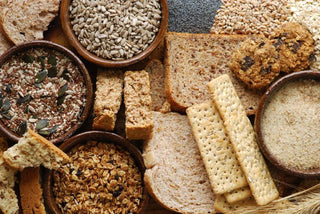Replacing white rice with whole grains, including brown rice, reduces the risk of developing type 2 diabetes by 36 percent, according to a study published in the latest issue of Archives of Internal Medicine.
This was the first study among a Western population to evaluate the relationship between white rice and brown rice intake and the risk of developing type 2 diabetes (T2D). Previous studies on rice consumption and T2D risk showed mixed results but brown rice consumption was not isolated.
The distinction is important because white rice has a higher glycemic index (a measure of how quickly a carbohydrate raises blood sugar levels) than brown rice (64 vs. 55). In Asian populations, higher white rice consumption has been associated with increased incidence of diabetes. Conversely, an inverse relationship exists between whole grain consumption and risk of type 2 diabetes (T2D).
While consumption of rice in the U.S. is relatively low in comparison to Asian countries, it is increasing. Perhaps more important, consumption is primarily from white rice and not brown rice.
Researchers from the Harvard School of Public Health and Brigham and Women’s Hospital used data from two large, well-known cohort studies – the Health Professionals Follow-up Study and the Nurses Health Study (I and II). Data was collected from almost 200,000 participants (about 40,000 men and 158,000 women) over a 22 year period. During this time, about 5 percent or 10,507 participants were diagnosed with T2D.
Data on diet, lifestyle and disease status was collected for study participants. Using a food frequency questionnaire, participants were categorized into five categories of white rice intake and three categories of brown rice intake, depending on consumption levels.
Participants who consumed 2 or more servings of brown rice per week were more likely to be healthier. This group engaged in more physical activity and consumed higher levels of fruits, vegetables and whole grains, cereal fiber, magnesium and multi-vitamins. Their consumption of red meat and trans fats was lower.
After adjusting for age, and a number of dietary and lifestyle variables, study participants who consumed 5 or more servings of white rice per week, were 17 percent more likely to develop type 2 diabetes over the study period.
Conversely, study participants who consumed 2 or more servings per week of brown rice, lowered their risk of developing type 2 diabetes by 11 percent.
Substituting 50 grams of white rice per day (or about one third of a daily serving) with the same amount of brown rice was associated with a 16 percent reduction in T2D risk. If whole grains were substituted instead of brown rice, the risk of diabetes was 36 percent lower.
Senior author Dr. Frank Hu, said, “From a public health point of view, whole grains, rather than refined carbohydrates, such as white rice, should be recommended as the primary source of carbohydrates for the US population.”
The Bottom Line
Aside from lowering your risk for developing T2D, choosing brown rice over white rice is nutritionally superior. Unlike its refined counterpart, brown rice (intact rice) has more fiber, vitamins, and minerals.
So, when you order rice with your next Thai or Chinese meal, opt for brown rice. Or, when cooking at home, prepare a whole grain rice dish. Just be sure to add extra time to your schedule as whole grain rice takes longer to cook (roughly 40 – 60 minutes).
We especially like Lundberg which specializes in organic and whole grain rice products. Their more than 150 products can be found in natural and most conventional food stores. Near East and Uncle Ben’s, a more well-known brand, also offer a number of whole grain rice products.
To further reduce your risk of type 2 diabetes, you may want to exercise more, consume more fruits and vegetables, and eat less red meat and trans fats - like those health conscious individuals in the study.

